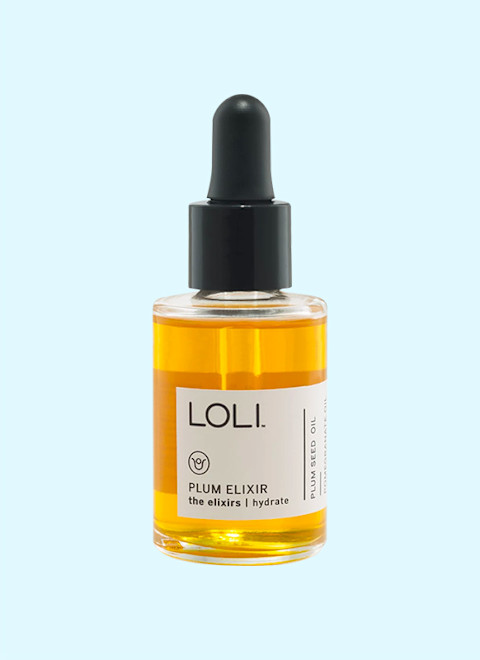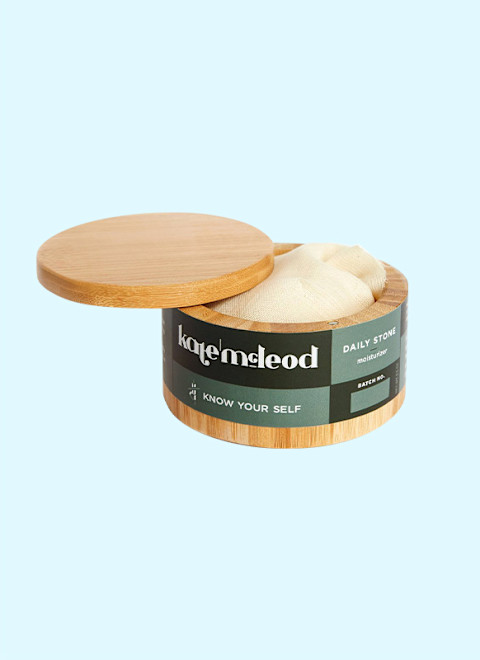Water-Free & Waterless Beauty: What It Means + Why It Matters In 2020

Skin care and beauty "trends" tend to focus on what ingredients you are putting in a product—but in the case of waterless, water-free, or anhydrous beauty products it's all about keeping one very common addition out. Water, yes really.
Water is a mainstay in many beauty products (check out your vanity; you'll see it listed as the first ingredient for most), so why would there be such a strong push to leave it out? Well, that comes down to sustainability, shelf life, and efficacy. Here, everything you need to know about waterless beauty.
Why use waterless beauty products?
By 2025, 5 billion people will be affected by water shortage. Today, some 1.1 billion people lack access to water, and 2.7 billion people have at least one water scare a month. There are many factors that play into this—from population growth and agriculture to, of course, climate change.
As the beauty space starts to move toward greener, more sustainable options, from the packaging used to better-for-the-environment ingredients, one area we'll start to hear more about is water consumption. Why? Because water is used in countless beauty products.
"For decades water has been a go-to inexpensive and readily available filler ingredient," says Vapour Beauty co-founder Krysia Boinis. The brand's a mainstay in the clean makeup space, and they recently relaunched with reformulations and new, eco-friendlier packing. The biggest part of that reformulation? Going waterless in 97% of their products. "As consumers and brands become more conscious of global freshwater shortages—we are located in our high desert home of Taos, New Mexico, so this is personal for us—we're going to see water treated as the precious resource it is. Waterless formulation will continue to be a sustainable choice, one that supports the greatest environmental preservation."
The trend has been in the works for a few years now: Companies like Unilever, L'Oréal and Procter & Gamble have pledged to eventually reduce their water footprint in the coming years to varying degrees. And while we celebrate whenever the big brands make commitments to more sustainable measures—that's usually when you see more impact, after all—what's exciting right now is these smaller, more nimble brands who are able to implement change faster.
Hence, Vapour Beauty being able to reformulate their entire line. Or the new brand Pinch of Colour being able to launch with entirely waterless formulas. This, of course, isn't to say it's easy.
"Growing up in Albania and experiencing water scarcity firsthand, I knew this was important," says Pinch of Colour CEO Linda Treska. "But creating waterless products can be a very big challenge as water has been, and continues to be, one of the main ingredients in beauty and personal care products." So while we'll absolutely see brands tout reduced-water formulations in the coming years, getting to that point might take some time given the formula hurdles.
Waterless beauty benefits.
Obvious environmental benefits aside, water-free or water-reduced formulas also tend to be more potent and last longer. (This means you can get away with using less and don't need to toss it as frequently, which not-so-coincidently is another environmental benefit.)
"Most beauty products are 80 to 95% water. This means the 'active' ingredients are diluted, and since water can easily grow bacteria, there is a need to add chemical preservatives, which are known irritants and carcinogens. Then other synthetics are added to impart a texture or scent to the product experience, transforming water into varying textures and forms to entice and delight the customer. So essentially, the customer is purchasing diluted and polluted product overpackaged in plastic," says Tina Hedges, product formulator and founder of LOLI Beauty.
But back to that bacteria point: "As a scientist—infectious disease immunology—I, unfortunately, know more than I'd like to when it comes to microbe contamination. As you know, water can be a great thing, but it increases the risk of contamination as bacteria need water to flourish," says Robb Akridge, Ph.D., CEO, founder of REA Innovations and co-founder Clarisonic. "Anhydrous cosmetics do not have water; therefore, bacteria have a difficult time growing in them. Now every system has a flaw; since anhydrous products typically have oils, they can become rancid like old cooking oil. You can get around this by the simple addition of an antioxidant, like vitamin E, to help keep them from spoiling."
However, you're not off the bacteria hook, just yet, he notes. "Just because bacteria don't flourish in anhydrous doesn't mean they can't be introduced to the product, and just stay there, alive," he says. "For example, if you have an anhydrous body scrub, every time you put your hand (probably wet hand) in the jar, you are adding more bacteria from your hands. The best solution is not to put fingers or put used dirty implements into containers."
Akridge says, too, that skipping water-as-a-filler makes the end product more efficacious for the skin. "Anhydrous products absorb easier into the skin because of oil lipid content to get actives to where they need to go, whereas water products aren't as effective," he adds.
Our favorite waterless beauty products
If you're looking for a few samples to try, here are our favorites for body, skin, and makeup.
Costa Brazil Body Cream
This body cream is made with a rich blend of oils found in the Amazon, like kaya, cayay, and tucuma seed. "If we added water, we would dilute the actives found in our natural ingredients and the cream wouldn't be as rich, it wouldn't be as potent, and our customers wouldn't see the same results or benefits," says brand founder. Francisco Costa, who notes they follow the Credo Clean Standard.
Body Cream, Costa Brazil ($98)

LOLI Beauty Plum Elixir
An award-winning tonic, this allover product makes your skin glow and hair shine. It's made with four organic, food-grade seed oils, including the namesake plum seed. Not only can you use it for just about anything—lip gloss, scalp treatment, cuticle oil—but it even works as a base for LOLI's other products.
Plum Elixir, LOLI Beauty ($68)

Kate McLeod Daily Stone
This body lotion is made with only eight ingredients, three of which are for the scent: cocoa butter, sweet almond oil, apricot kernel oil, avocado oil, fractionated coconut oil, rose, frankincense, and neroli. It's molded into a, well, stone-like shape, which then melts on skin contact. It's truly a one-of-a-kind moisturizing experience.
Daily Stone, Kate McLeod ($45)

Pinch of Color Matte Velvet Waterless Lip Colour
Richly pigmented with a cushy texture—what else could you want from a lipstick? It's infused with rose hips oil, jojoba oil, and mango seed butter. In addition to being water-free, it's free of parabens, mineral oil, and phthalates. The collection comes in 10 decadent shades.
Matte Velvet Waterless Lip Colour, Pinch of Color ($24)

Vapour Aura Multi Stick
"I've been a waterless formulator for almost 20 years. I'm happy to see it becoming a trend because it's more environmentally conscious and it also creates a beautiful bridge from skin care to cosmetics," says Kristine Keheley, Vapour Beauty co-founder. In this lip-and-cheek product, there's organic avocado oil for moisture, amino acids to soothe skin, and essential oils for a light scent. Plus, the color payoff is incredible.
Aura Multi Stick, Vapour ($36)

